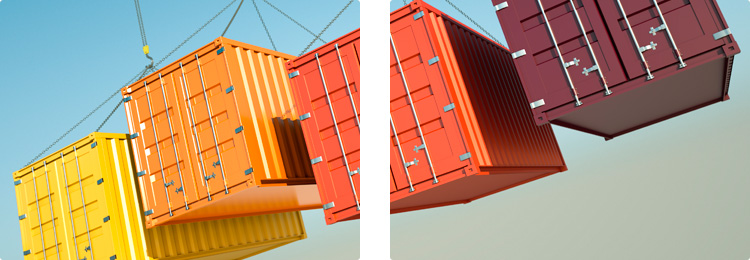What differentiates e-merchants from others is, among other things, the fact that they are dependent on a third player: the carrier. And this carrier, which really does everything it can to deliver packages on time and in excellent condition, is itself dependent on many constraints: weather, road conditions, accidents, etc.
Unfortunately, therefore, your package may be lost, stolen or damaged during delivery and experience has shown that in these cases buyers expect compensation or a replacement product quickly. or even to receive discounts or offers in compensation.
The carriers offer you shipping or “declared value for transport” insurance for this. But should you subscribe to it automatically?
CONSIDER THE RISK

A lost or damaged package can cost you money in replacement and shipping, especially if it’s a high-value item.
Before deciding whether or not to purchase shipping insurance, think about the types of products you are shipping.
- Certain types of packages are more at risk of being stolen, for example if they can be resold (valuable jewelry, smartphones or any other valuable electronic item, branded clothing, etc.).
- Some destinations are more at risk of theft. Your carrier can advise you on this. Since you are shipping internationally, you should consider insurance if your item’s value exceeds $ 100. Be aware that even some insurance companies (other than carriers) may refuse to cover parcels destined for certain countries at higher risk, unfortunately, particularly in Central America or Africa.
- High-end products are not only more at risk of theft, but you also need to consider how much it will cost to replace them (delivery included) if you don’t cover them.
DO THE CALCULATION!
Think about the profitability of insurance by estimating:
- the value of your items
- your shipping volume
- the number of products likely to be damaged or lost
See if it’s more cost effective to pay for insurance or pay replacement costs out of pocket.
HOW MUCH CAN INSURANCE COST?
The rates vary depending on the carrier but are similar. Canada Post for example offers liability coverage up to a value of $ 100 which is included for all Priority, Xpresspost and Flat Rate Box shipments. For standard packages, additional charges apply to insure the product.
Canada Post offers additional liability coverage up to $ 5,000 for a fee for all of its services except Flat Rate Boxes.
The offers are much the same at FedEx, UPS and Purolator. Each domestic package is automatically covered up to a value of $ 100 against loss or damage and for shipments over $ 100. You can purchase additional insurance at an average rate of $ 2 to $ 5 per $ 100.
HOW TO PROCEED ?
A small percentage of your packages will likely be damaged or lost over time, or even destroyed. Everything is possible !
If these items are of value, then it is best to ensure that shipping insurance will compensate you.
- When you create your shipment, declare the value of each package so the carrier knows how much coverage is needed in the event of a claim.
- Declare the values that you can prove because you are honest but also because the carrier will obviously ask you for proof of value in the event of a problem.
- Pack your packages properly, respecting your carrier’s standards, otherwise your claim may be refused.
- Check that your items are insurable and read your insurance contract carefully. Each carrier has its own lists of insurable and non-insurable items, ranging from luggage and liquids to hazardous materials and money. Refer to the shipping terms of each carrier *. If your carrier does not support the type of package you want to ship, you may be able to purchase insurance from another company that specializes in package insurance.
- Compare the protection rates of carriers and those of other companies such as Shipsurance for example. Whether it’s because your carrier doesn’t insure the items you want to send or because you want to pay the best price, it’s worth shopping for their insurance.
- If one of your packages is damaged or lost and has already been delivered, you are responsible for filing a claim with the carrier. You will need to provide proof of breakage in case of damage and proof of wholesale value.
TO INSURE YOUR PACKAGE OR NOT?
As we just saw, it depends on your shipping volume and the value of your items, knowing that these are insured for up to $ 100 in most cases.
Some companies prefer not to purchase additional coverage because it is cheaper for them to replace the product than it is to pay insurance for each item. On the other hand, if you are shipping a large volume of valuable items, shipping insurance will pay off.
Recall !
If you decide to request additional coverage for your packages, verify that the packaging meets your carrier’s standards for strength and safety which are clearly specified on each carrier’s website.
Finally, the choice of shipping insurance is a fairly simple calculation to make since the question to be asked is whether you will be able to recoup your financial losses in the event of a delivery problem or not.
Knowing that customers who have a failed or poor delivery experience may not come back to you if they are poorly compensated, you must be able to provide your after-sales service with excellence and intervene quickly in the event of a problem. by replacing valuable items.
If your packages arrive late, you can always entrust the follow-up of your reimbursement possibilities to Buster Fetcher and thus collect money regularly, but when it comes to broken or damaged packages, you have to think about the costs generated.
Shipping insurance allows you to do this without loss. It’s up to you to calculate!








